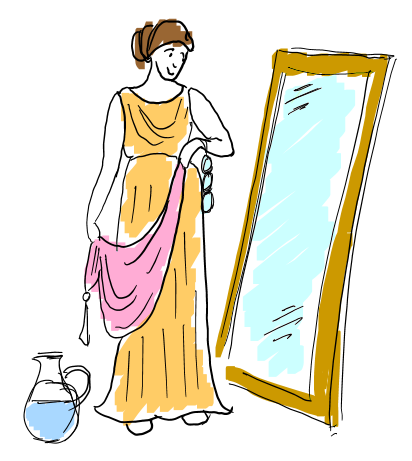
A Light-hearted History of Glass & Fused Glass.
2.6 million years ago, stone age man (or woman), who were believed to be ingenious inventors, crafted glass from black volcanic debris (I guess that there was nothing else to do back then) in order to make decorative objects and for making weapons (as there were a number of dinosaurs to deal with).

Moving swiftly on (by about 2.5 million years!) - a reliable source talks of a man walking along the shores of the Nile in Egypt who survived a lighting strike, only to realise that the lighting had turned some of the sand to into a shiny translucent object. He apparently decided to call this new finding ‘a blooming’ miracle’ (early signs of Yorkshire dialect). Being an educated sole, he later decided to adjust the name to ‘transparent amorphous solid’!

As the new discovery fractures easily to leave sharp jagged edges, an opportunity was quickly adopted to use it for cutting tools and weapons. More gentler folk decide that as well as having the capacity to inflict bodily harm, the new discovery looks quite nice too and begin to create beads for bracelets and necklaces.
Having stolen the new discovery from the Egyptians and Syrians (as well as many other things, including their women and children) the Roman’s inject some sense into the product and rename the now quite popular medium to ‘glesum’, meaning ‘transparent, lustrous substance’ though this was too complicated for most and it quickly became known as ‘glass’.

Not being slow to seize on a fantastic money-making opportunity, the Romans establish Trier (in now modern Germany) as their centre of glass making, from where it is developed into a vast range of products and transported far and wide.
By the 1st century BC a Syrian craftsman who was apparently called ‘Hassan’ (ok I accept we don’t know his real name) established the glassblowing technique and invented a blow pipe. This revolutionary discovery made production easier, faster and cheaper than glass fusing and this led to its demise. The Roman’s adopted glass blowing with gusto and the glass production flourished and spread from Italy to all countries under the Roman rule. Egypt, Syria and other countries along the eastern coast of the Mediterranean were leading the manufacture of glass.

As most news commentators were focused on the rise and fall of the Roman empire during the 2nd and 3rd centuries, glass art took a step back from the limelight and was largely forgotten.
Nothing much more happened until the Renaissance in 1291 when Murano in Venice becomes the centre for glass making. The English catch on to “this new-fangled idea” in the 17th Century by producing glass in the Venetian tradition (perhaps somebody went on holiday to Venice and came back with a glass artefact from the gift shop).

Obviously not wanting to be left out of the resurgence in glass, by the early 19th century fused glass becomes very popular in America circa 1960.
In 1974 three art school graduates set up a company ‘Bullseye Glass’ in the backyard of a ramshackle house in Portland Oregon (though the term ‘ramshackle’ is not verified and in fact it may have been a very nice dwelling to somebody). They make and produce coloured sheets for the stained-glass trade, but a chance encounter with another artist called Klaus Moje in 1979 inspires them to do something that had never been done before: produce a palette of tested-compatible glasses for creating works in a kiln…awesome!

So here we are 2019 – Rachel establishes The Glass Forge. 
